|
|
NOTES ON THE ORIGINS OF GIANT MANTA AND HORN - 2 Written August 2006 |
|
|
NOTES ON THE ORIGINS OF GIANT MANTA AND HORN - 2 Written August 2006 |
NAVIGATION
|
The sandblast horn with 485. Some remarkable similarities in the shape of the rim and the overall curl of the body. |
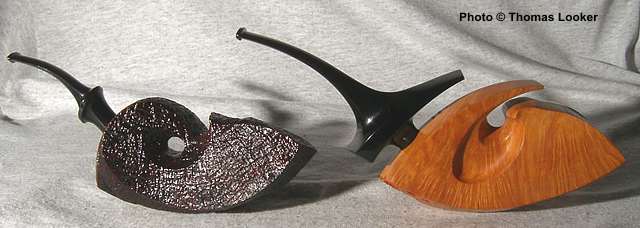


|
With 484. Perhaps less resonance here and more straight contrast. On the other hand ... more study may reveal something ... |

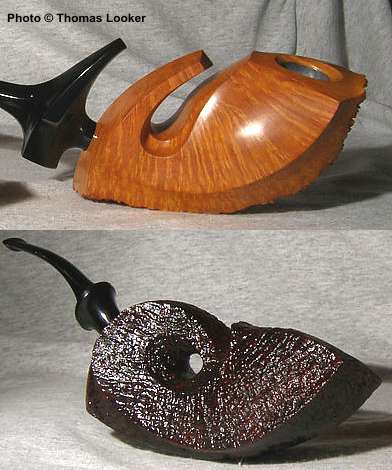
|
"Manta à Manta" 484 and 349 What makes a Manta a Manta? Primarily the shape of the bottom, I think ... But it looks as though there are some similarities in the shape of the bowls, even between the "ornamental" ("organic") and the "monumental" ("architectural") variations of the design... (Actually, I'm not sure I like any of those terms entirely. Maybe I should be thinking of the newest pipe as simply a "paneled Manta" ... though of course Toku's "panels" hardly bring to mind Ilsted's facets.) In any case, note some of the underlying shapes in the following photos. The first sequence shows what my hand feels is the most characteristic element of the manta - that broad sweep of bowl that sits snugly in my palm when I hold the pipe.
|
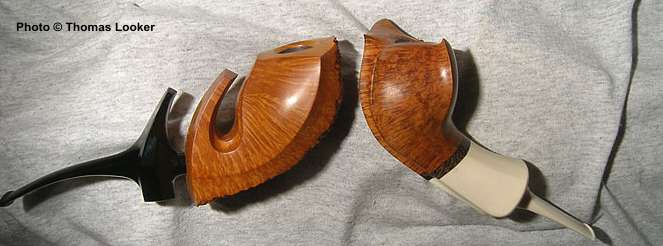
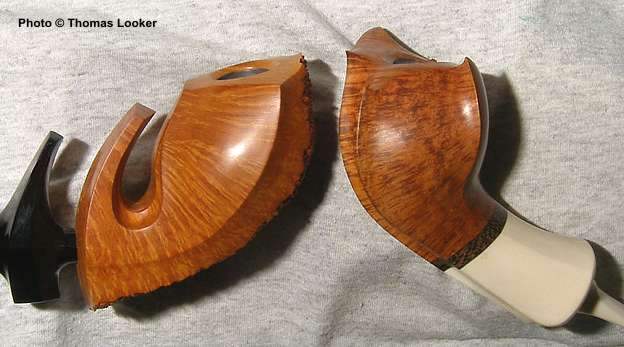
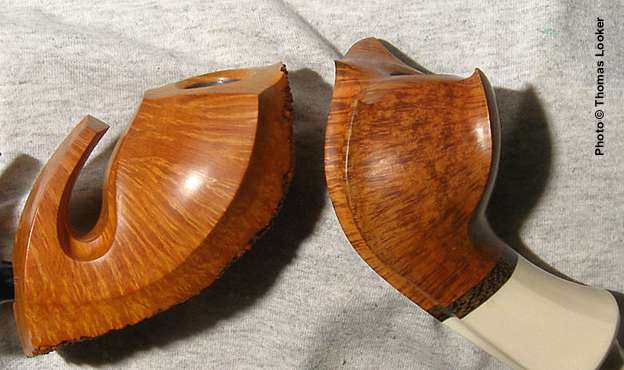
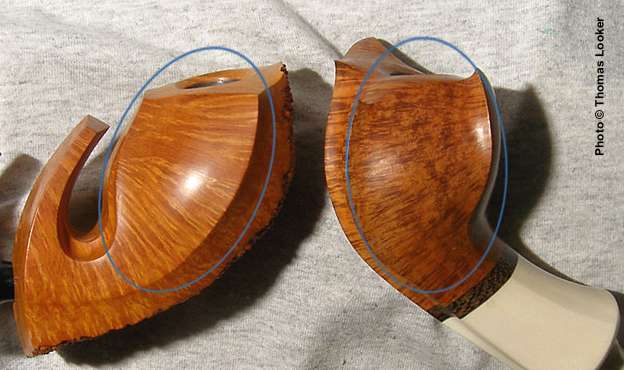

|
I'm probably pressing matters a little here, but maybe it's possible to view the ridge on the left side of the new Manta as a kind of vestigial "fin" from the earlier design. |

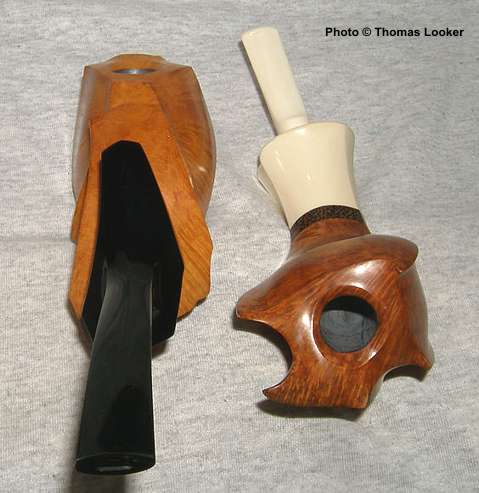
|
I'm more certain of what I see when I consider the sinuous curve of the original Manta body, so important in evoking the fluid grace of the carving. The bending line seems to have been incorporated into the tail, while the head of the pipe is held more in check (its "sails trimmed," so to speak, along with its goatee and top-knot [see pictures of the front below.]) |
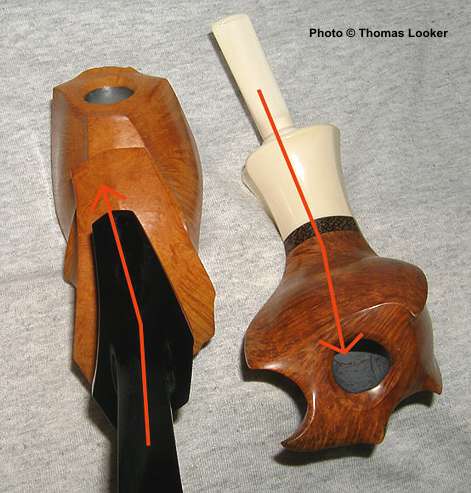
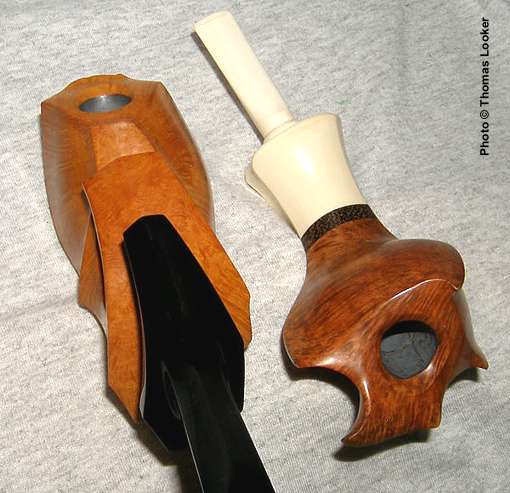

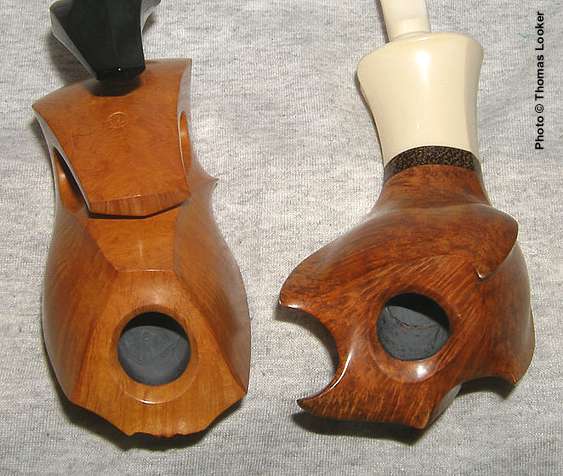
NAVIGATION
END OF NEW MANTA AND HORN 2